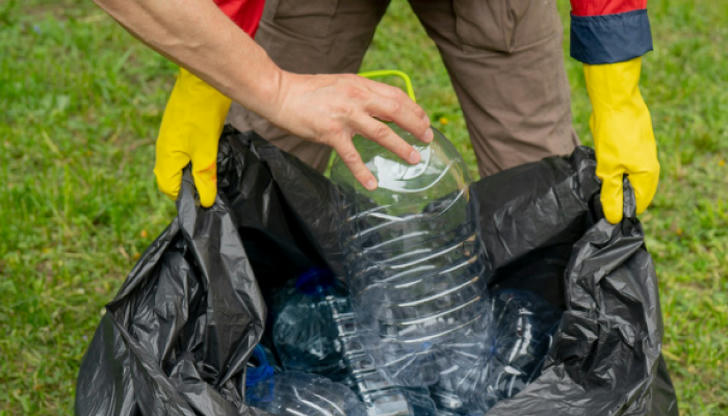Garbage Collectors Perspective on America's Waste Problem
As a garbage collector, I see America’s waste problem up close, every day. From overflowing bins to hazardous materials, I deal with the byproducts of our consumer-driven lifestyle. But what most don’t realize is that waste collection is not just a job—it’s an essential service that keeps communities clean, healthy, and functioning.
This article will describe the reality of waste in the United States, the challenges facing waste collection workers, and why waste collection jobs are more important than ever.

How Much Trash Are We Really Producing?
Let's start with the numbers. According to the U.S. Environmental Protection Agency (EPA), Americans generated about 292.4 million tons of municipal solid waste (MSW) in 2018. That breaks down to roughly 4.9 pounds per person per day. When you're collecting waste from 500 to 700 homes daily, that adds up fast. Some days, it feels like the trash never stops.
Over half of this waste—146 million tons—ends up in landfills. The rest is split between recycling (69 million tons), composting (25 million tons), and energy recovery through incineration (35 million tons). While recycling and composting help, too much still gets buried in the ground.
The Reality Behind the Collection
Most people think trash disappears once they roll the bin to the curb. For us, it's just the beginning. We lift, haul, and sort tons of waste in all kinds of weather—rain, snow, heat waves. The work is physically demanding and often dangerous. One wrong move around heavy machinery or sharp objects, and someone can get seriously hurt.
Beyond the physical strain, we deal with health risks. From chemical fumes to broken glass and even biological waste, we never know what's in a bag. During the COVID-19 pandemic, we were labeled essential workers, but many of us lacked protective gear in the early days. Still, we showed up—because trash doesn't take a day off.
Pay, Benefits, and the Value of the Work
People often ask, "How much do you make?" The median annual wage for sanitation workers in the U.S. is about $45,160, according to the Bureau of Labor Statistics. In some cities, especially with union support, wages can climb to $70,000 or more with overtime. San Francisco, for example, offers some of the highest pay—over $80,000—thanks to strong labor agreements.
Most of us receive health insurance, retirement plans, and paid time off. But benefits can vary. In smaller towns, pay and protections are often lower. In larger cities, the job is more demanding, but also better compensated. Still, the work is high-risk, and injuries are common. We earn every dollar.
Challenges on the Route
Labor Shortages
There's a national shortage of CDL drivers and sanitation workers. Many routes are understaffed, which means longer hours and more stress for those of us on the job. Delays in pickup lead to complaints—but few understand the strain we're under.
Equipment and Safety
Much of the infrastructure is aging. Trucks break down, and outdated equipment increases accident risks. Some companies are investing in automated arms and smart routing tech, but many of us still do it the old-fashioned way—by hand.
Global Market Shifts
When China stopped accepting most recyclables in 2018 due to contamination, many U.S. cities were left scrambling. Suddenly, materials we collected with care were being dumped in landfills. It was frustrating—to do the work, only to see it wasted.
Real-World Impact: A Case from New York
I have friends working for the New York City Department of Sanitation (DSNY), one of the largest in the country. They serve over 8 million people and handle more than 12,000 tons of waste daily. Entry-level salaries start at $40,000, but with overtime and hazard pay, many earn $70,000+. They also get pensions and health care, a rarity in many industries today.
During the pandemic, DSNY workers were on the frontlines. Despite health risks and public fear, they kept the city running. Their work reminded everyone: when garbage isn't collected, cities grind to a halt.

Looking Forward: The Future of Waste Management
More Trash, More Jobs
The U.S. waste industry is expected to grow to $130 billion by 2030, driven by urban growth and environmental regulations. That means more job opportunities, not just for collectors, but also in recycling, composting, and waste tech.
Smarter Systems
New tools like GPS tracking, smart bins, and AI sorting are making our work more efficient. In Seattle, for example, smart bins alert when full, reducing unnecessary pickups and fuel use. Still, human workers are irreplaceable—machines can't handle every situation, especially in dense or unpredictable environments.
Sustainability and Responsibility
Policies like plastic bans and producer responsibility laws are reducing waste at the source. That helps us, too. Less waste means fewer pickups, less strain, and safer working conditions. Composting programs are growing, and zero-waste goals are pushing cities to rethink disposal entirely.
Final Thoughts
As a garbage collector, I see firsthand the impact of waste—not just on the environment, but on workers and communities. We are the people behind the bins, doing the heavy lifting to keep streets clean and cities safe. Our job isn't glamorous, but it's vital. Waste isn't just a problem; it's an opportunity—to build better systems, create good jobs, and protect our planet.
Next time you take out the trash, think about where it goes—and who's making sure it doesn't pile up.
